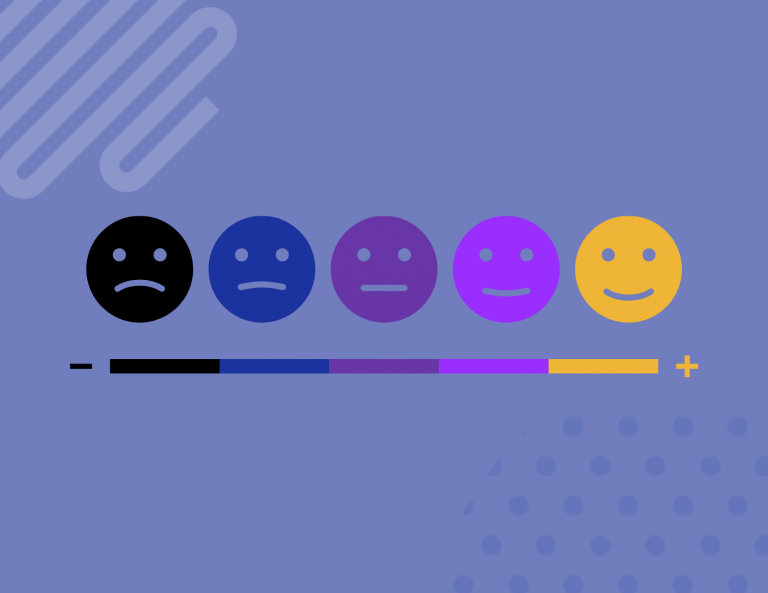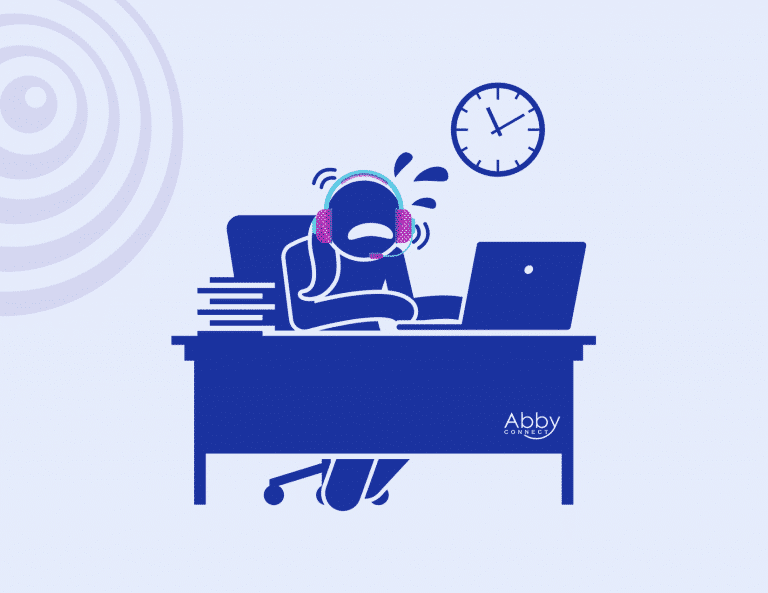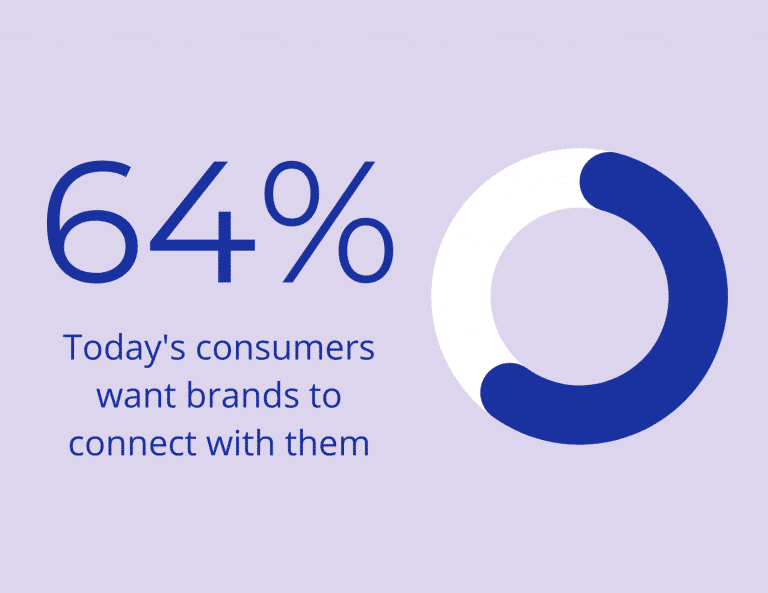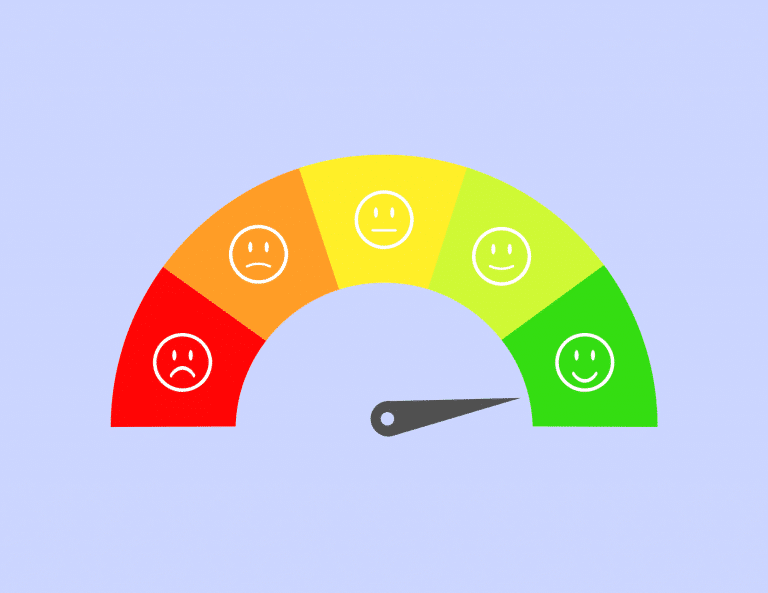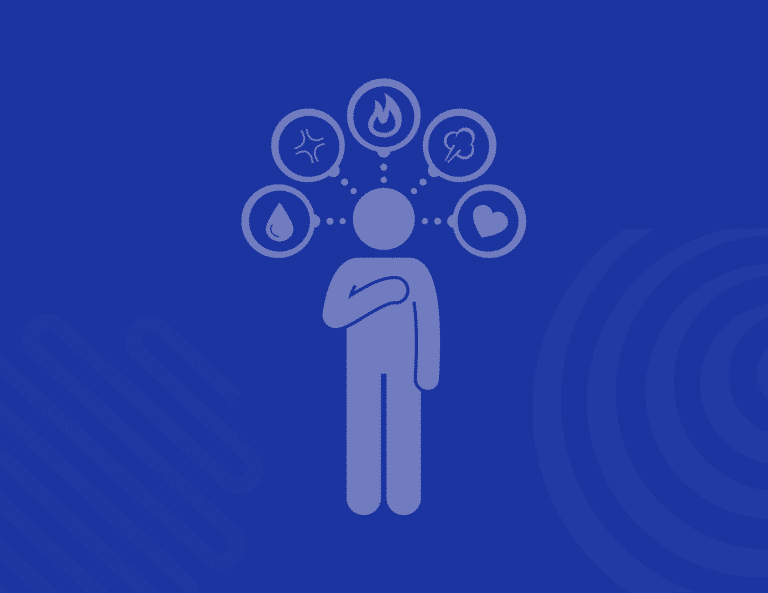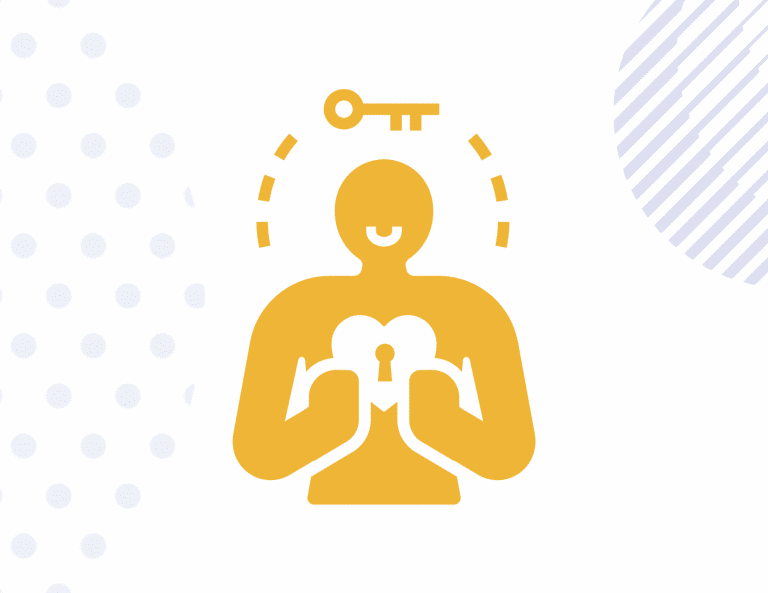A helpful guide in determining what a caller is feeling and its impact on your bottom line:
In the customer experience industry, it is our underlying goal in wanting to elevate the level of happiness and satisfaction in all our customer interactions. And at Abby Connect, we’ve found that we can provide an even better experience to our customers by having the ability to recognize our caller’s emotions.
But just how can the ability to recognize emotions enhance a customer experience? Well, it’s all in the service we provide. How well did we listen to our caller? How well did we acknowledge the caller, their situation, and their feelings? Did we empathize and reassure the caller all whilst having a friendly tone? To get the ball rolling on all of these factors, we must first understand emotions.
So, why is the ability to recognize emotions considered to be both a good and important necessity? Well, in search of help, have you ever called a vendor or servicer of yours and were greeted by a customer representative who just seemed to lack emotion? Or, perhaps they sounded bored and unenthused about really helping you? Either way, you can hear it in their lackadaisical tone and flippant responses that they just don’t seem to (really) care about your problems or needs.
Or let’s say you’re on the other spectrum of this and YOU are the receptionist or customer service representative, having the ability to recognize your customer’s emotions will be advantageous to both you and the caller because it will give you the ability to personally connect with your caller and solve problems better and faster.
Having a high emotional intelligence quotient is helpful in recognizing emotions, but even if your emotional intelligence quotient isn’t high don’t worry, by following this guide, you can learn just how having the ability to recognize emotions will be a tremendous help to you and the people you help.
And who wouldn’t want their issues to be handled as quickly as possible? These days we’re all about the quickest way to get informed, served and just plain ol’ helped out. But to really provide an exceptional customer experience, the trick is to still do that while also connecting with your customer based on their emotion even if it’s just a short while. It makes for an even better customer experience to work with someone who has a genuine, authentic connection with you and this is the type of service we at Abby Connect strive to deliver with each interaction we have with our callers.
When I first started as an Abby Connect receptionist, I knew that my natural ability in being friendly and welcoming was going to help me with my job. I knew that my big smile would lead me to be genuine in my hello to everyone. But I also knew that being friendly wouldn’t be enough to really exemplify my interactions with the callers I spoke to.
What really allowed me to deliver stellar service through the phone meant that I had to be sincere in wanting to help people. People and their problems. Or their needs.
And whether what the caller needed was information, help, or to purchase a product, having the ability to read people’s emotions helped me in giving our callers whatever they needed – on an emotional level. Because I was already attending to what the caller needed PLUS I was connecting with them on an emotional level, it resulted in a better customer experience for them.
So, how do you recognize emotions over the phone? How can you really tell what someone is feeling when you can’t see them? Well, some of the clear and easy indicators are those “verbal” clues. Let’s explore that more, because I know it sounds like an obvious thing because HELLO you’re on the phone so you can only “hear” what’s going on so everything is “verbal”. But it’s a common misconception!
We found this to be especially true with new receptionists who hadn’t provided customer service over the phone before arriving here. Some just weren’t adept at quickly recognizing emotions during a phone conversation. Especially since it was so new to them! We’re trying to make sure we’re taking care of everything with efficiency and we tend to forget to address the emotions presented in the call.
However, rest assured we’re going to give you some great insight into better sensing the caller’s emotional state leading to a better experience overall – for both you and your caller.
By following these below steps, it will help guide you in recognizing the caller’s emotions:
- Learn to develop self-awareness
- Learn to develop social awareness
- Listen to their story
- Check their tone, pitch, and speed of talking to decipher their emotions
- Check yourself by checking on the caller’s emotional state
Developing your self-awareness
To fully recognize others’ emotions, you must be able to recognize your own first! Being self-aware means you’re really aware of yourself. I know, you’re probably thinking, “duh” right? But it’s a little deeper than what we think on the surface level.
It means you have the ability to recognize your emotions, strengths, and limitations. You are able to acknowledge your feelings, know what you’re good at and understand what you need to improve.
Stephen Covey, author of The 7 Habits of Highly Successful People said, “In our personal lives if we do not develop our own self-awareness and become responsible for first creations, we empower other people and circumstances to shape our lives by default.”
So, how do you do this? Listen to yourself! Assess what’s upsetting you and why. Analyze what makes you happy. And why does it so? What am I good at? Where do I need to improve? Asking yourself these questions will help you come to terms with knowing who you are.
For me, I can personally say that I am very self-aware. I can answer these questions, feel confident in the things I’m great at, and I certainly know where I can be better. These people are what we call accountability.
Along with self-awareness, comes self-management. Self-management relates to how you respond versus how you react. And again, that’s where the whole “recognize your own” emotions first come in.
Once you are more aware of yourself, you’re able to manage your emotions better because you understand why you’re feeling the way you are. Once you understand why you’re feeling an emotion you can manage yourself positively (or appropriately) when it comes to how you respond. You’ll find that you have better self-control! You’re literally managing yourself. And who wouldn’t want to be a person who has better health and makes better life choices?
Developing your social awareness
Once you’ve got your own emotions down it’s time to tackle the rest of the world. Social awareness means you understand other people’s emotions and you respond in a way that would be considered appropriate for the situation. Social awareness means you can sense what other people are feeling, and in some situations thinking. And when you respond in the right way it proves this.
And how do you develop your social awareness? Excellent question. Start with empathy. To have empathy, the ability to feel what another person is feeling, is part of being socially aware. Developing your empathy muscle will help in your relationships and interactions because you’re understanding people better and communicating to them that you get where they’re coming from because you’ve been there before.
For me, I think this is especially true – and this is coming from someone in a marriage for 19+ years AND I’ve been at Abby Connect for 11+ years. Being empathetic and socially aware has helped my relationships tremendously both at and outside of work.
With social awareness, also comes social competence and managing relationships. When you have a heightened sense of social awareness, combined with communicating well, you can actually be very useful when it comes to conflict resolution!
Reading social cues is also an excellent way to become more socially aware. Pay attention to those verbal expressions over the phone in the tone and manner the caller is using. Their influx within their voices is a clue into what the caller is feeling.
Having a better understanding of emotional intelligence and purposefully developing both self and social awareness creates a better experience for your callers.
According to sproutsocial.com, there’s a high expectation from consumers on what they want from brands. And sure enough, connecting with the consumer is ranked 64%.
Listen to their story (and talk a little less – at first)
If you’re lucky, your caller will just flat out tell you their emotions.
We’ve heard callers say:
“I’m frustrated”
“I’m super excited”
“I’m felling anxious”
“I’m worried”
“I’m upset and disappointed”
“I’m happy”
Now, I mentioned if you’re lucky, your caller will just blatantly tell you how they’re feeling and what’s going on. The rest of the callers? Well, that’s our job in learning to recognize what the caller is feeling through their verbal communication. Better yet, in going above and beyond our job (which is actually our standard), we even follow it up with acknowledgment and empathy to help the situation lean toward a better direction. Now, insert yourself into their story; How would you feel? Does the way you’d feel reflect what your caller is saying or sounding?
It’s all about the experience! And it starts with recognizing those emotions.
Recognizing the emotion of happiness
When it comes to reading the emotional state of a caller we’re going to start with the easily recognizable attitude, aura, and tone of happiness. As an Abby Connect receptionist, it is mandatory to sound enthusiastic. In fact, this is our “normal” tone of voice. So, if a caller is matching our tone, they’re likely either naturally friendly or they are actually happy about something!
As an extension of our client’s business, we represent each client as if we are the receptionist that is actually sitting in our client’s office. And each of our clients expects a receptionist to sound like they are not just happy, but also happy to be working there and is also eager to assist customers over the phone and making them feel happy and attended to so they continue to be loyal customers.
With this said, to accomplish this favorable Abby Connect attribute and “happy voice” we must smile. By smiling, it changes your tone and demeanor, and doing this helps create a better attitude.
If a caller is clearly smiling or laughing over the phone, these are clear indicators that they are happy. So, continue their happy-go-lucky streak by matching your caller and being just as (if not more) happy!
What does it sound like when a caller is happy? It’s all in their tone. The tone is going to be number one here because it is going to signify what they’re feeling.
Their tone will likely sound:
- Excitedly high pitched or loud
- Fast in speed
- Like they are smiling (genuinely)
- Friendly
You can also recognize your caller is happy because they:
- Are sharing the good news with you
- Don’t seem bothered by anything (at least at the moment)
- Say optimistic and well-wishy statements
“My brother is getting married! I’m so happy for him and I’m suuuuuper excited because I’m a bridesmaid in the wedding!”
“I just got a new car!”
“I can’t believe my daughter is graduating high school!
“We’re going on vacation today!”
Being able to read happiness is pretty easy. But what does it sound like when a caller is sad?
Recognizing the emotion of sadness
While it is easy to hear that someone is happy, it can sometimes take a tad longer to realize and understand that a caller is sad. Especially if you don’t personally know the person you’re speaking with on the phone. Some people have a monotone voice and when this happens it can be a challenge.
One way to hear if a customer is sad over the phone is by listening to their voice.
An important thing to note here: After reciting our client’s company greeting (enthusiastically of course), we listen to the caller for a couple of specific things.
First, the reason for their call. And second, are they upset about something? We can typically read this emotion by listening to their tone.
How’s their tone? Probably not a high-pitched tone like an excited person would sound, right? Right.
So how does a sad caller sound? Pretty much like this:
- Speaks in a low tone of voice
- They speak slowly
- They sigh
- And their overall attitude seems down or defeated
These are the callers that:
- Have bad news and need help
- Sound hurt or disappointed
- They’re quiet or share little information
They say things like:
“I was in an accident.”
“Someone I know is hurting.”
“I need help.”
Keep in mind when speaking with a caller who is sad, it is expected (and essential) that we now drop our tone from bubbly to gentle. It is a must to match our caller’s tone as it signifies, we heard what they said and we are compassionate for what they are going through. Because it just wouldn’t make sense if the caller sounded like the above points and yet we’re still using our happy voice. The ability in recognizing emotions should be reflected in the way we respond back to the caller.
Yes, a caller can simply say:
“I’m upset, devastated, or hurt.” But an excellent receptionist should be able to know that without it being said by the caller.
Recognizing emotions should be intentional in each call.
Recognizing the emotion of annoyance, frustration, or anger
Eeek. Now for the really difficult emotions. Frustration and anger. These emotions cause hesitation and sometimes fear in some receptionists due to the fact that well, it‘s hard to deal with people that are NOT happy!
People on the phone who are agitated, annoyed, or angry have a whole different vibe to them and it can be felt right through the phone! Just like happiness can exude through voice and tone, well frustration and anger can do the same thing. And it can sound harsh!
How can you tell if someone is annoyed, frustrated, or angry?
Often times they are:
- Aggressive or loud
- Possibly use long and drawn-out language and/or
- Overly enunciating everything to make a point
- Definitely NOT smiling
What else do they do?
- They snap or yell
- Interrupt
- Say mean, aggressive, or accusatory things
- Can possibly have a passive-aggressive attitude
“This is my third time calling, why hasn’t anyone called me back?!”
“He didn’t do what he said he would!”
“She stole from me!
“You’re dumb.”
Ask yourself if their emotional state changed
So, what’s a good way to check yourself in confirming you correctly recognized someone’s emotions? Well, ask yourself: did the emotional state of the caller change (even by little) from your responses? Were they at the very least satisfied with what you told them you’re going to do in order to help them? Did they seem a little more at ease? Or perhaps, they’re a little less on edge compared to the beginning of the call? Were they relieved? Happy? If you can answer yes to any of these questions then yes, their emotions changed and it was because of you.
I hope these tips were helpful in allowing you to see that this is a skill you can surely learn and master. Recognizing emotions in others will allow you to help people better. They’ll feel listened to and because you’ve established a rapport by being able to read their emotions and respond appropriately it will create trust between you and the caller (or anyone else for that matter).
Now answer that phone, use these steps and intentionally understand your customer and deliver exceptional service!


